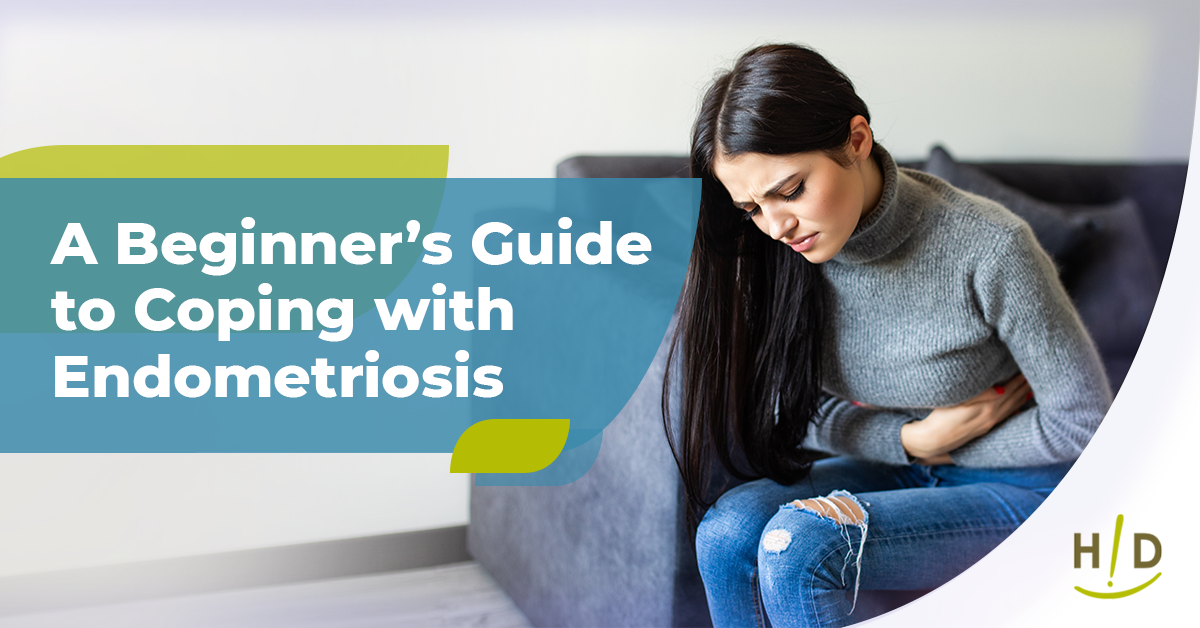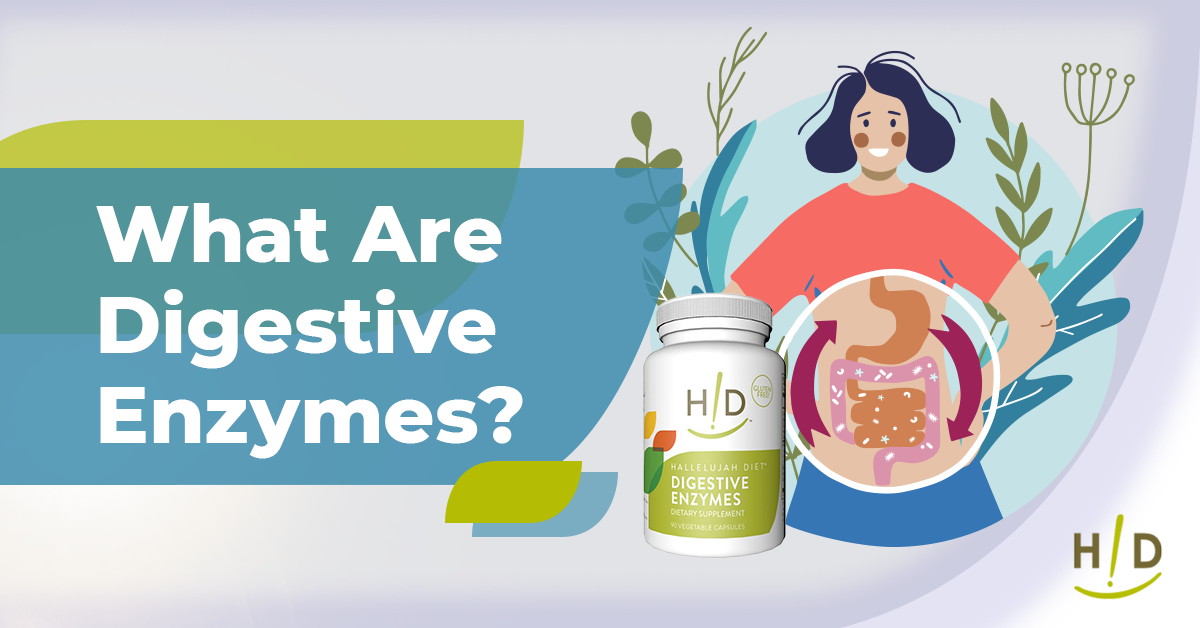If you’ve just been diagnosed with endometriosis, you’re not alone. It affects about 5 million American women and 200 million women worldwide and it’s most common in women of menstruation age. If you want to learn more about the disease, then you’ve come to the right place. We will cover what it is and how you can help manage it.
What Is Endometriosis?
Endometriosis is an incurable, yet manageable, disease of menstruating women. It’s a painful disorder where the tissue that normally lines the inside of your uterus, also known as the endometrium, grows outside your uterus. This differs from a healthy uterus where this tissue develops inside to prepare the lining of the uterus for menstruation.
The endometrium consists of glands, blood cells, and connective tissue. Most commonly, it is found in one or more of your reproductive organs, including your uterus, fallopian tubes, and ovaries. It can also connect to any tissues lining your pelvis, as well as the spaces between the bladder, uterus, vagina, and rectum. Lastly, it may also involve the bowel, intestines, and appendix. This displaced endometrium tissue functions normally. With each menstrual cycle, it thickens, breaks down, and bleeds. However, since this tissue has no way to exit your body, it can cause pain.
What Are the Most Common Symptoms of Endometriosis?
If you have endometriosis, you can expect a variety of symptoms, such as:- Painful periods (dysmenorrhea)
- Pelvic pain associated with menstrual cramps
- Lower back and abdominal pain
- Pain with intercourse
- Pain with bowel movements or urination
- Excessive bleeding or spotting between menstrual periods
- Infertility
- Digestive problems (including diarrhea, bloating, and nausea)
- Fatigue
You may think that if your symptoms are severe then your condition is, too, but that is not the case. The severity of the pain is not an indicator of the extent of the condition. You can have mild endometriosis with severe pain or advanced endometriosis with little to no pain.
Natural Remedies for Endometriosis
There are many natural reliefs to help with the pain caused by endometriosis. They are:
- Acupuncture – Some women report relief from acupuncture. Do your research before beginning and consult a reputable acupuncturist. You may also want to check if it’s covered by your insurance or begin with another method.
- Osteopathic Manipulative Treatment – An osteopathic physician uses manipulation techniques to stretch your muscles and joints, releasing pain caused by menstruation.
- Heat – Taking a warm bath or using a heating pad helps to relax your pelvic muscles, which can reduce pain.
- Pelvic Massage – Massaging the pelvic area is shown to help reduce menstrual pain associated with endometriosis.
- Rest – Lying on your side with knees pulled to your chest can help relieve discomfort.
- Manage Your Stress – It’s known that stress can exacerbate a variety of health conditions, and endometriosis is no different. Stress-relieving techniques include deep breathing, visualization, progressive muscle relaxation, or autogenic training.
- Exercise – Regular exercise helps endometriosis in several ways. It reduces the inflammation caused by endometriosis. It also helps to reduce estrogen levels in the body, which many experts agree is associated with the disease. In addition, exercise releases endorphins, which, in turn, helps to reduce pain in the body.
- Diet – A plant-based diet lowers levels of inflammation in the body, while an omnivore diet increases inflammation. Avoiding caffeine is also suggested, as caffeine can aggravate your symptoms.
The Benefits of a Healthy Diet
Adopting a healthy diet is one of the best things you can do to lessen your endometriosis symptoms. A plant-based diet helps balance your hormones, reduce inflammation, and support your immune system. It also aids in lessening painful bowel movements associated with the disease. A diet rich in plant-based foods may help reduce estrogen and inflammation in the body and support your immune system. In addition, those high in fiber will support a healthier bowel movement. These beneficial foods include:Oils:
- Extra virgin olive oil – Use in salad dressings, stir-fry, or drizzle over steamed veggies.
- Coconut oil – Use in stir-fry and baked goods.
- Flax seed oil – excellent source of short-chain omega 3s
- Clean fish oil – excellent in long-chain omega 3s, especially DHA
Fruits:
- Apples – Bake them with cinnamon as a healthy dessert or use them to bulk up smoothies, salads, and oatmeal.
- Avocados – Make avocado toast or add to quinoa, leafy green, or bean-based salads.
- Bananas – Mash into bread and muffins, add to toast, cereal, and oatmeal, or use in a green smoothie!
- Blackberries – Make a berry salad.
- Blueberries – Eat by themselves, in smoothies, on salads, granola, muesli, or oatmeal. They are also delicious mixed into pancake or muffin batter.
- Cherries – Make a smoothie or mix with berries, apples, and pears for a refreshing fruit salad.
- Coconut – Enjoy in a tropical smoothie or add unsweetened shredded pieces to bars, muffins, granola, and desserts.
- Figs – Eat as a snack.
- Grapes – Snack on them or add to a fruit salad.
- Oranges – Enjoy their sweetness alone or added to a smoothie.
- Papaya – Blend with mango and coconut to make a yummy smoothie.
- Pears – Use as a natural sweetener to replace honey or maple syrup in baked oatmeal.
- Prunes – Eat them on oatmeal or as a snack by themselves.
- Raisins – Add to oatmeal or trail mix.
- Raspberries – Make a berry smoothie or eat plain.
- Strawberries – Add to your oatmeal, smoothie, or spinach salad.
Vegetables:
- Artichoke – Roast Jerusalem artichokes with rosemary to resemble roasted potatoes.
- Beets – Shred beets and cabbage to make a slaw.
- Broccoli – Enjoy raw with hummus or lightly cooked.
- Brussels Sprouts – Roast them with sweet potatoes.
- Carrots – Drink carrot juice daily.
- Cauliflower – Pulverize it in the food processor to make rice or pizza crust.
- Corn – Eat on the cob or make a Mexican bean salad.
- Kale – Stir extra virgin olive oil, lemon juice, honey, soy sauce, and balsamic vinegar together and massage into the kale. Add your favorite fruits, vegetables, nuts, and seeds, and you have a delicious raw salad.
- Mushrooms – Enjoy them raw for the greatest anti-inflammatory properties. Try adding them to leafy green or bean salads.
- Okra – Try it pickled or roasted.
- Onions – Inulin, the water-soluble fiber in onions, helps promote regularity. They are a versatile food that can be enjoyed raw or cooked in soups.
- Potatoes – Such the versatile food, add potatoes to soup, eat alone, or make a raw potato salad.
- Red Bell Pepper – Add to salads, stir-fry, or dip into hummus.
- Seaweed – Enjoy in a sesame kelp noodle slaw.
- Spinach – Use in juice, smoothies, salads, pesto, soups, pasta sauce, or on pizza.
- Sweet Potatoes – Enjoy them baked with coconut oil and cinnamon or make sweet potato fries.
Beans, Grains, and Legumes:
- Organic barley – Add to leafy-green salads.
- Black Beans – Toss in soup, salads, or make a black bean hummus.
- Bran Flakes – Enjoy as a cereal.
- Brown Rice – Make stir-fry, veggie casserole, or Indian-style lentil and rice dish.
- Chickpeas – Make hummus, soups, stews, and vegan patties.
- Kidney Beans – Make a vegan chili.
- Lentils – Use as the base for stir-fry and soups or sprinkle onto salads.
- Lima Beans – Add to soups, stews, and bean salads.
- Millet – Make a variety of tasty options, such as a sweet porridge or a savory one-dish meal.
- Navy Beans – Make an olive oil and lemon vinaigrette and add it to a bean salad. Garnish with parsley.
- Organic oats – Make oatmeal or blend into smoothies to thicken them.
- Split Peas – Make soup!
- Quinoa – Use in a variety of salads and casseroles.
- Organic Whole Wheat – Pasta and bread are healthy choices if they are whole wheat. Add tomato sauce or pesto to pasta, and make vegan sandwiches and wraps with whole-wheat bread or tortillas.
Nuts and Seeds:
- Almonds – Add to granola, salads, or enjoy as a snack on their own.
- Chia Seeds – Make chia pudding, overnight oats with chia, or add to baked goods, salads, and smoothies. They contain both fiber and Omega-3s.
- Flaxseeds – Grind two tablespoons into a coffee grinder daily and stir or mix into foods such as oatmeal, smoothies, and baked goods.
- Pecans – Make a raw pie crust and add your favorite fruits as filling.
- Pistachios – Snack on them.
- Walnuts – These give texture to salads and baked goods.
Miscellaneous:
- Dark Chocolate – Enjoy as an occasional snack. Make sure it’s at least 70% cacao, vegan, and doesn’t contain added sugar.
- Turmeric – Add to any foods you want to have an Indian flavor (such as stir-fry).
- Green Tea – Drink a cup of green tea with honey and lemon daily.
- Fermented Foods – To help your digestive health, incorporate fermented foods into your diet. You can make veggies and nut-based vegan cheeses.
If you want to reduce inflammation in the body, avoid refined (white) grains, processed foods, trans fats, hydrogenated oils, added sugar, and dairy. By following a plant-based diet, you will help to reduce the discomforting symptoms caused by your endometriosis.
How Supplements Can Help
Since endometriosis is a gynecological condition associated with high levels of estrogen in the body, balancing your hormones through supplements can help relieve the symptoms naturally. Hallelujah Diet’s Luminology line of products helps to balance your hormones by reducing excess estrogen in the body. These products come in three stages, for women who are pre-menopausal, in menopause, or post-menopausal. In addition, many other Hallelujah Diet supplements may relieve symptoms associated with endometriosis. The immune system boosters and digestive enzyme supplements and probiotics may help regulate your digestive and immune system health.
Get Support
When dealing with any disease, it’s great to have the support of others who have been in your situation. That’s why finding an endometriosis support group near you is so important. In these groups, you can share your struggles with managing this condition. Check out these resources to get more help with your condition:- https://www.endofound.org/
- https://www.facebook.com/EndoStrong
- https://www.endocenter.org/
- https://endometriosisassn.org/
- https://www.meetup.com/topics/endometriosis/
You don’t have to suffer through endometriosis alone. With these resources, you will be on your way to managing your condition. Say hello to a happy, healthy life.
How to Prepare for Your Doctor’s Visit
It’s important to seek medical attention to cope with endometriosis. You can set up an appointment with either your primary care doctor or your gynecologist. If you are also trying to get pregnant, you may want to seek help from a reproductive endocrinologist. Before your first visit, you should:
- Prepare a list of all your symptoms, even if you think they are unrelated. Include the frequency and severity of them, as well as the first known onset of them.
- List all the medications and supplements you take on a regular basis, including the dosage.
- Ask a family member or friend to accompany you to your doctor’s visit. It’s good to have someone else present to soak in the information and help you analyze it when you get home.
- Take notes during your visit, even if you think you will remember. It’s always good to have a written copy of what was said so you can refer to it later.
- Prepare a list of questions to ask your doctor, beginning with the most urgent ones.
Questions you may want to ask your doctor include:
- How is endometriosis diagnosed?
- What natural treatment options do you recommend?
- What resources do you have for me? (Health tips, support groups, etc.)
For mild symptoms, your doctor may suggest taking over-the-counter medicines for pain. These non-steroidal anti-inflammatory drugs (NSAIDs) relieve pain by reducing inflammation. Examples of these include ibuprofen (Advil and Motrin) or naproxen (Aleve).








